How to Camp Via Personal Watercraft
Get up close and personal with nature
Even the most thrilling personal watercraft may get boring if all you do is spin circles in the same bay, or race your friends to the same marker. Long-distance touring is one fun diversion to keep things fresh, but why not take things one more step? Camping by PWC is fun, relatively easy, and offers a whole new way to explore your surroundings, even plan a vacation around.
Take a moment to ponder the advantages of camping via PWC. You can get into places you’d never reach by car, even access spots normally out of the reach of traditional boats. Your trip is up close and personal with nature and the shoreline. By night you’re sleeping under the stars, and by day you’re playing with your favorite means of transportation.
Nearly any modern PWC can do it. They have both the range and the storage capacity to make camping a reality. All you need is a little preparation…
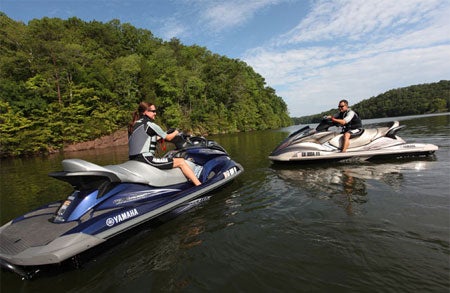 Despite their small size PWC are adept tools for camping.
Despite their small size PWC are adept tools for camping.Pick Your Spot
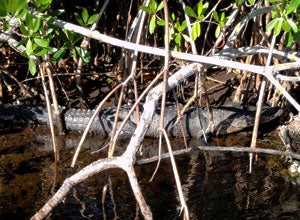 It’s amazing how close you can get to wildlife on a PWC.
It’s amazing how close you can get to wildlife on a PWC.Like any good camping spot, location is key. Look for public or private camping areas along your favorite waterways, or search online for spots you might wish to visit on a vacation. High-profile spots include destinations like Lake Powell or Catalina Island, but camping can be an adventure anywhere you go. I recently spent several days in Florida’s Ten Thousand Islands, and found a choice, empty beachfront location right on the Gulf of Mexico, overlooking a beautiful sunset to the west. I’ve also camped in a public campground along a river in West Virginia that wasn’t nearly as high profile, but equally enjoyable. All it takes is a tent, a spot relatively close to the water, and your PWC.
Scope out potential spots by searching online. Suggestions? Start with a combination of “waterfront camping” and your potential destination. Online PWC forums are also a big help in finding locations that others have already pre-approved for you.
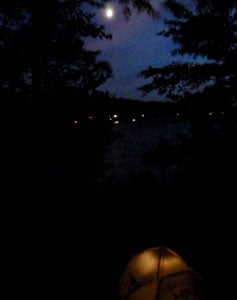 If nothing else, camping gives you a chance to get away from the bright lights of the city.
If nothing else, camping gives you a chance to get away from the bright lights of the city.While it may be tempting to wing it, experienced campers suggest having at least a loose itinerary to fall back on…where you’re going, where you plan to stay each night, and any areas that are off-limits to PWC. Map out your plan on the appropriate charts for the area, and if possible, upload your route into a handheld GPS. Mark waypoints like gas stops, places to eat, and campgrounds along the way.
Look for unique spots that typical boaters are forced to miss. PWC can run in shallow waters, and their narrow size allows them to get into unique places, like Lake Powell’s slot canyons. Take advantage of how up close and personal you can get to the shoreline, wildlife, etc, and plan a route that’s unique. Just remember to always be respectful of your surrounding, other boaters, and the animals and sea life that call these areas home.
As to campsites (or location within a campground), be picky when possible. Level ground is key, as is a location that offers some type of shade if you plan to be there during the heat of the day. A little breeze also keeps things cool, as well as keeps away the insects. One often overlooked requirement? How you’ll secure your PWC. If you’re anchoring, be aware you need a secure, solid anchor, and may have to contend with changing tides in coastal locations. If pulling ashore, don’t let a dropping water level leave you high and dry. If you’re worried about security, by all means use the PWC manufacturer’s theft-prevention devices, but also look for simple solutions as well. A nearby tree and cable lock works wonders.
Pack Wisely
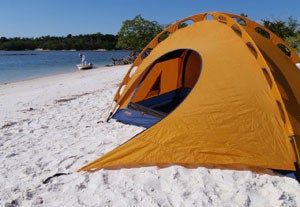 Tents are easy to pack and a snap to set up. Who wouldn’t want to wake up to a view like that?
Tents are easy to pack and a snap to set up. Who wouldn’t want to wake up to a view like that?How to bring all the necessities with you on a relatively small PWC? Those that frequently camp suggest a newcomer think like a backpacker. Small, freestanding tents set up easily, and take up little room in a stowage compartment. Likewise, simple foam pads, available at most camping stores, soften the earth below your sleeping bag, and will make for a much better night’s sleep. As for clothing, go for quick-dry, lightweight fabrics that pack small and won’t get soggy. Fleece is a good bet for cool evenings. Other necessities would be a lantern and flashlight, candles and matches, sunscreen, and bug spray.
Package food into multiple small, reusable containers with lids. That avoids trash, and packs better. Avoid items that have to be kept cold; it’s too much hassle. A small camp stove comes in handy for hot meals. Clean up with biodegradable soap, like Camp Suds, that can be used on both you and your utensils.
As to how to keep everything dry, don’t trust your PWC’s storage compartment for a watertight seal. Instead, pack vital items in dry bags, and use Ziploc baggies for small items. Try to get most gear stashed within the front storage compartment, but in a pinch items can be lashed inside the footwells. There are also stern storage racks that can accommodate a cooler.
As to the inevitable calls of nature? Look for facilities along the way, obviously, but for when nothing’s convenient, follow the “leave no trace” guidelines favored by environmental agencies. That means urinating in rocky or sandy areas away from camp, or in coastal areas, below the high-tide line. As to solid waste, try the Wag Bag or Restop, compact solutions favored by kayakers, or even just a biodegradable bag filled with kitty litter, or a container with a tight-fitting lid. No, it’s not the most glamorous side of camping, but leaving your personal leftovers behind isn’t good for the environment, and will quickly bring the scorn of fellow campers.
On Your Way
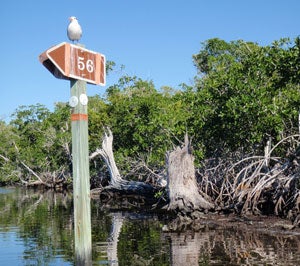
Last items on the checklist? The same as on any long-distance ride — handheld GPS, charts/maps, VHF radio, cell phone, maybe even weather radio. Additional gas cans can also be lashed to the stern for remote areas.
Sure, it’s a lot of preparation to do things right, but the payoff is an adventure that you’ll remember for a long time after…and some of the choicest waterfront property in the country.
Now get planning. Summer’s just around the corner, and there are lots of adventures waiting.
Related Reading
Jet Ski Trip on Scenic Lake Mead
Riding the Tennessee River
PWC Travel: San Diego
PWC Travel: Exploring Ontario’s Muskoka Region
Get PersonalWatercraft.com in your Inbox!
Like PersonalWatercraft.com on Facebook
Comments
Most Popular

2025 Yamaha JetBlaster PRO 2-Up Review

Remembering the Sea-Doo XP

2024 Kawasaki Jet Ski STX 160X Review

Whatever Happened to the Wetbike?

2017 Kawasaki Jet Ski Ultra 310LX Review











 Your Privacy Choices
Your Privacy Choices